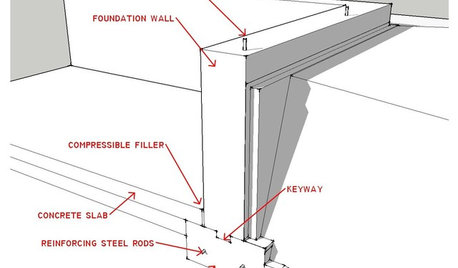Foundation issues on an inspection report on older home.
kellienoelle
11 years ago
Related Stories

MOVINGHome-Buying Checklist: 20 Things to Consider Beyond the Inspection
Quality of life is just as important as construction quality. Learn what to look for at open houses to ensure comfort in your new home
Full Story
ARCHITECTUREKnow Your House: What Makes Up a Home's Foundation
Learn the components of a common foundation and their purpose to ensure a strong and stable house for years to come
Full Story
CONTRACTOR TIPSBuilding Permits: The Inspection Process
In Part 5 of our series on home building permits, we explore typical inspection schedules for a variety of project types
Full Story
DECORATING GUIDES13 Decorating Tips for Older Homes
Preserve the personality of the past while designing for now with these tips for paint, rugs, window treatments and more
Full Story
UNIVERSAL DESIGNHow to Light a Kitchen for Older Eyes and Better Beauty
Include the right kinds of light in your kitchen's universal design plan to make it more workable and visually pleasing for all
Full Story
REMODELING GUIDESConsidering a Fixer-Upper? 15 Questions to Ask First
Learn about the hidden costs and treasures of older homes to avoid budget surprises and accidentally tossing valuable features
Full Story
MOVINGHiring a Home Inspector? Ask These 10 Questions
How to make sure the pro who performs your home inspection is properly qualified and insured, so you can protect your big investment
Full Story
CONTRACTOR TIPSYour Complete Guide to Building Permits
Learn about permit requirements, the submittal process, final inspection and more
Full Story
REMODELING GUIDESOriginal Home Details: What to Keep, What to Cast Off
Renovate an older home without regrets with this insight on the details worth preserving
Full Story
GREEN BUILDINGHouzz Tour: An Innovative Home Shows What It’s Made Of
Homeowners design their Washington, D.C., residence with sustainability in mind and to accommodate them as they get older
Full Story










Rachel
columbusguy1
Related Professionals
Bethpage Kitchen & Bathroom Designers · Clarksburg Kitchen & Bathroom Designers · Montebello Kitchen & Bathroom Designers · Soledad Kitchen & Bathroom Designers · Fullerton Kitchen & Bathroom Remodelers · Fort Myers Kitchen & Bathroom Remodelers · Gardner Kitchen & Bathroom Remodelers · Independence Kitchen & Bathroom Remodelers · Islip Kitchen & Bathroom Remodelers · Jefferson Hills Kitchen & Bathroom Remodelers · Londonderry Kitchen & Bathroom Remodelers · Overland Park Kitchen & Bathroom Remodelers · Warren Kitchen & Bathroom Remodelers · Ann Arbor Architects & Building Designers · Central Islip Architects & Building Designersrenovator8
kellienoelleOriginal Author
worthy
kellienoelleOriginal Author
worthy
kellienoelleOriginal Author
calliope
civ_IV_fan
columbusguy1
karinl